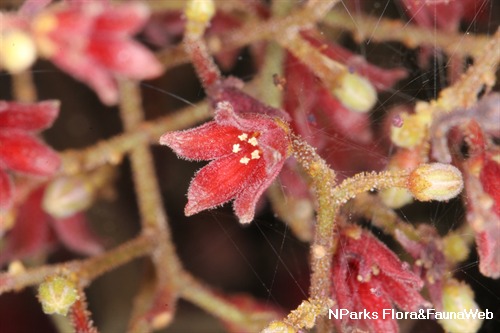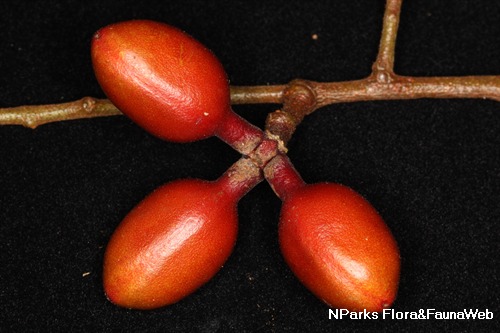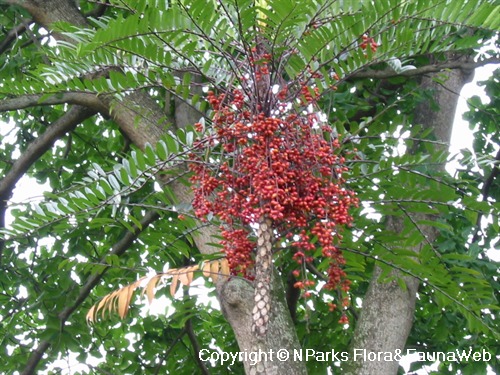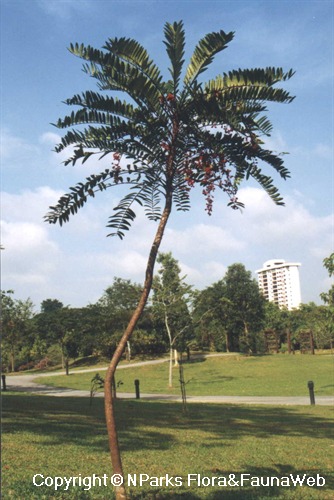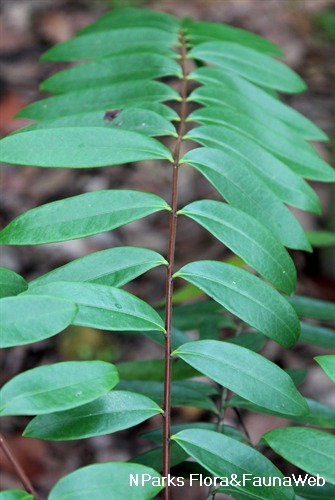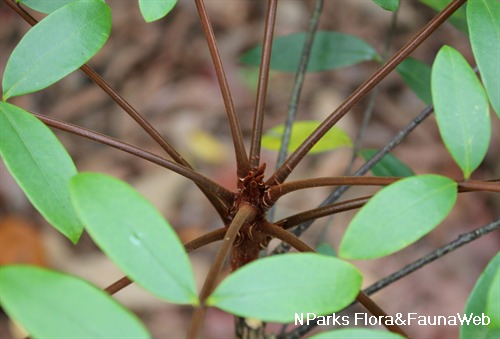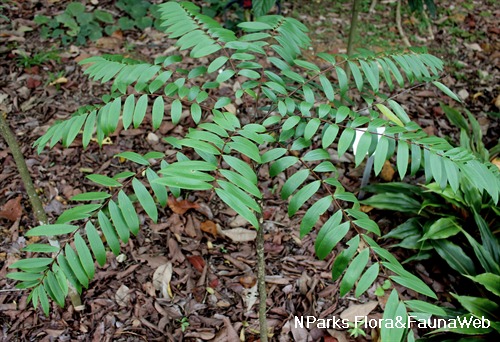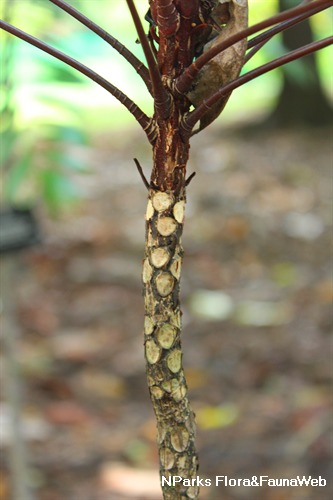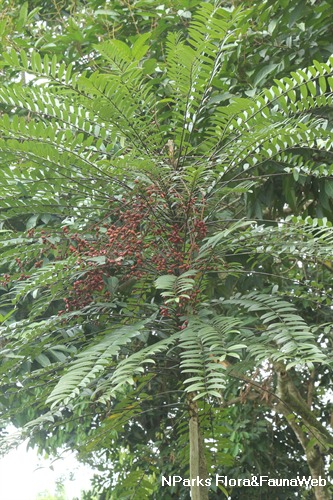
Back
Eurycoma longifolia Jack
| Family Name: | Simaroubaceae |
| Synonyms: | Eurycoma merguensis, Ailanthus siamense, Manotes asiatica |
| Common Name: | Tongkat Ali, Bidara Pahit, Ali's Umbrella, Payong Ali, Penawa Pahit |
Name
Classifications and Characteristics
| Plant Division | Angiosperms (Flowering Seed Plants) (Dicotyledon) |
|---|---|
| Plant Growth Form | Tree (Small (6m-15m)) |
| Lifespan (in Singapore) | Perennial |
| Mode of Nutrition | Autotrophic |
| Plant Shape | Open |
| Maximum Height | 12 m |
Biogeography
| Native Distribution | Southern Myanmar, Vietnam, Laos, Thailand, Cambodia, Sumatra, Peninsular Malaysia, Singapore, the Philippines, and Borneo |
|---|---|
| Native Habitat | Terrestrial (Mountain), Shoreline (Coastal Cliff, Sandy Beach) |
| Preferred Climate Zone | Tropical, Sub-Tropical / Monsoonal |
| Local Conservation Status | Native to Singapore (Endangered (EN)) |
Description and Ethnobotany
| Growth Form | It is an usually unbranched, small tree up to 12 m tall, with branches crowned by a rosette of leaves. |
|---|---|
| Foliage | Its alternate, stalked pinnate leaves are up to 100 cm long. Its leathery leaflets are lance- to egg-shaped, dark green above, mid-green below, and 5–20 by 1–6 cm. |
| Flowers | Its flowers are bell-shaped, greenish white to greenish red or purple, 6 mm wide, with petals that are 4.5–5.5 by 1.5–3 mm, and develop each into 1–5 fruits. |
| Fruit | Its fruits are oblong, yellow when ripe turning red, and 10–20 by 5–12 mm. |
| Habitat | It grows in heath forest, sandy coasts, submontane forest, and the understorey of primary and secondary forest to 1,200m altitude. It is abundant on well-drained, sandy soils. |
| Cultivation | It can be propagated by seed. |
| Ethnobotanical Uses | Medicinal: The young leaves are eaten raw to relieve stomach pains. The roots are used as an aphrodisiac based mostly on folklore, and they also contain anti-malarial compounds. A decoction of the root is used to reduce fevers, reduce high blood pressure, and relieve gastric pains. The roots are also used to induce vomiting, and poultice sores, ulcers, and wounds. The bark is used for blood clotting in childbirth complications. |
Landscaping Features
| Landscaping | It is suitable for streetscapes, parks and gardens. |
|---|---|
| Desirable Plant Features | Ornamental Flowers, Ornamental Form |
| Landscape Uses | General, Suitable for Roadsides, Parks & Gardens, Small Gardens, Coastal |
Fauna, Pollination and Dispersal
| Pollination Method(s) | Biotic (Fauna) |
|---|---|
| Seed or Spore Dispersal | Biotic (Fauna) |
Plant Care and Propagation
| Light Preference | Semi-Shade, Full Sun |
|---|---|
| Water Preference | Moderate Water |
| Plant Growth Rate | Moderate |
| Rootzone Tolerance | Moist Soils, Well-Drained Soils, Saline Soils / Salt Spray, Fertile Loamy Soils |
| Propagation Method | Seed |
Foliar
| Foliage Retention | Evergreen |
|---|---|
| Mature Foliage Colour(s) | Green |
| Mature Foliage Texture(s) | Leathery |
| Foliar Type | Compound (Odd-Pinnate) |
| Foliar Arrangement Along Stem | Rosulate / Rosette |
| Foliar Shape(s) | Non-Palm Foliage (Lanceolate, Elliptical) |
| Foliar Venation | Pinnate / Net |
| Foliar Margin | Entire |
| Leaf Area Index (LAI) for Green Plot Ratio | 2.5 (Tree - Open Canopy) |
Floral (Angiosperm)
| Flower & Plant Sexuality | Bisexual Flowers |
| Flower Colour(s) | Red |
|---|---|
| Flower Grouping | Cluster / Inflorescence |
| Flower Location | Axillary |
| Flower Symmetry | Radial |
Fruit, Seed and Spore
| Mature Fruit Colour(s) | Red |
|---|---|
| Fruit Classification | Simple Fruit |
| Fruit Type | Dehiscent Dry Fruit , Capsule |
Image Repository
Others
| Master ID | 1597 |
|---|---|
| Species ID | 2890 |
| Flora Disclaimer | The information in this website has been compiled from reliable sources, such as reference works on medicinal plants. It is not a substitute for medical advice or treatment and NParks does not purport to provide any medical advice. Readers should always consult his/her physician before using or consuming a plant for medicinal purposes. |

